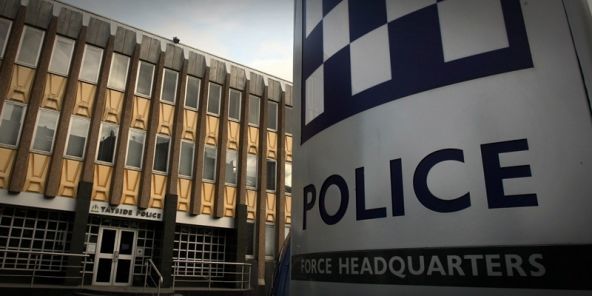Children as young as eight have been detained in police custody overnight in Tayside.
Since 2007, 741 under-16s have been kept in a police station or cells with 386 of them 15-year-olds.
The number of detained youngsters leaps to 1,933 over the five financial years when 16-year-olds, who are legally classed as adults by the justice system, are included.
However, the figures reveal that the number of children being detained has gradually decreased over the five-year period.
The figures include details of children whose departure date retrieved from the force’s custody application is later than the arrival date, meaning it could in some cases relate to stays which were technically ”overnight” but less than an hour.
The age of criminal responsibility in Scotland is 12 but children under that age can still be detected committing crime.
The most frequently recorded crimes include assault, theft by housebreaking, theft by shoplifting, vandalism and being drunk and incapable.
Detention for breach of the peace was the most common crime over the five years.
The figures did not break the crimes down into the age groups who committed them.
Fife Constabulary were unable to find figures for overnight detentions by under-16s.
The number of under-16s detained overnight across Tayside has declined from 240 in 2007/8 to 64 in 2011/12, a decrease one children’s charity worker praised as ”fantastic”.
Kieran Watson, child protection worker at 18 and Under in Dundee, said: ”It certainly seems to be vastly improving, so that’s fantastic.
”It would be worth now looking at why the figures are falling. We should research what’s behind it (the fall), whether it’s the work of a small charity, education in schools, whether it’s just a change in culture in young people. Perhaps they are just getting better at not getting caught.”
Continued…
”I would say it would definitely be worth investigating why and allocating funding to stop it (child crime.)
”Every time there’s a failure that’s what’s looked at but when there’s improvement we need to know why it’s happening and it needs to be replicated across the area.”
While the youngest detainee recorded in 2007/8 was only eight, in 2011/12 the six youngest were all 12.
Alison Todd, director of children and family services at Children 1st, said police should avoid holding children in cells.
She said: ”We are encouraged that figures are coming down. But it is still concerning that children are being detained in police cells overnight. They are not ideal places and the experience can be very traumatic for young people.
”We need to know what the story is behind these children being locked up in order that we can take the right, supportive action to help.
”Some children need help to change their behaviour or to address the causes of this. All efforts should be made to avoid putting young people in the cells. This means that more suitable accommodation has to be available and contactable out of hours.”
A spokesman for Tayside Police stressed crime committed by children is ”not acceptable”.
He said: ”The vast majority of children do not become involved in crime, or anti-social behaviour, but instead channel their energies into worthwhile and fulfilling pursuits and interests.
“Unfortunately, there is a minority who do commit crime or who are involved in anti-social incidents. Their behaviour is not acceptable to those living in the community and they will not be tolerated by Tayside Police.
“Tayside Police and our community officers in particular work closely with partner agencies to try to prevent and detect crime and also provide diversionaryactivities for young people in the area.
”Partners include community wardens and local authority anti-social behaviour teams, as well as youth intervention groups.”
Despite the multi-agency approach he said parents were still key in stopping child crime.
”We must not diminish the role that parents have to play in ensuring that their children are of good behaviour and do not cause misery for others or expose themselves to harm,” he said.
”All parents and guardians have a responsibility for their children. They should speak with them and take the time to find out where their children are, who they are with and what they are doing.
”We would also ask residents to contact the police straight away if they see or hear an incident, any suspicious activity or any anti-social behaviour where they live, so appropriate action can be taken.”
